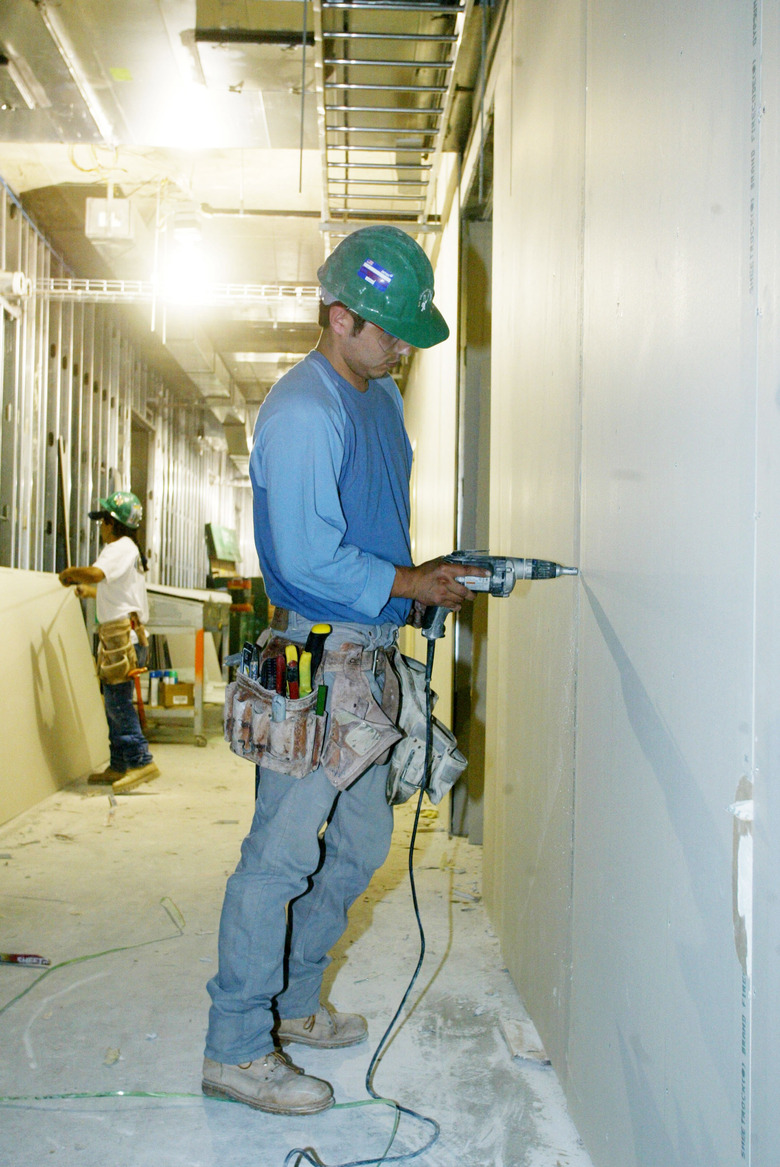What Do You Do Before You Paint Over Joint Compound?
Joint compound repairs and fills seams and nail holes in drywall. You can also use joint compound to repair cracked or damaged walls. You apply joint compound with a trowel or putty knife and allow it to dry before applying a second coat. The first coat of joint compound usually dries to create a slight depression and you need to reapply it to fill the imperfections completely. After the wall is smooth and the joint compound is dry, it is important to prepare the wall before painting over the joint compound.
Sanding
Before sanding, seal off the room where you are working to prevent the rest of the house from getting a coat of dust. Also, wear goggles to protect your eyes.
Sanding the areas where you applied joint compound leaves the patched walls smooth for priming. Sand all the seams and holes where you used joint compound until there are no lumps or raised areas. You can reach high areas of the room with a pole sander or use a stepladder to reach the ceilings. If the joint compound is thick, you will need fine grade sandpaper to smooth out the wall. If the joint compound is smooth, you can use a wet sponge to remove the excess compound.
Cleaning
Wiping off the dust after sanding ensures that the prime coat will not have nubs or dust mixed in with the paint. Vacuum the floor to remove all the dust from the room and wipe down the walls with tack cloth or a damp sponge. A clean, smooth wall gives the best results for the finished coat of paint.
Priming
The prime coat prepares the wall for the finish coat of paint. Priming the wall seals the joint compound, which has a different texture than the rest of the wall and absorbs more paint than the drywall. Priming blends the joint compound and the drywall, so the surface is uniform. Use a primer designed for painted walls. Apply with a paint roller and use a brush for smaller areas. When the primer dries, lightly sand the wall with very fine sandpaper to remove any nubs in the paint.
Painting
Once the prime coat is dry, the wall is ready for painting. The primer allows the finish coat of paint to go on smoothly, preventing any light or dark areas. Dark colored paints usually take two finish coats for even wall coverage, while light colors may only require one coat of paint.
